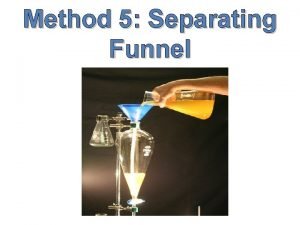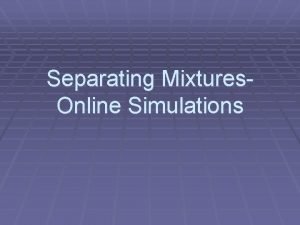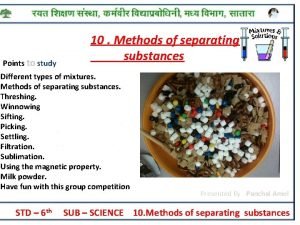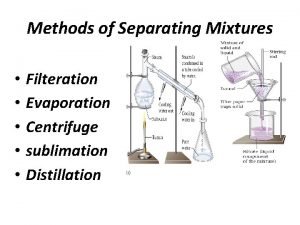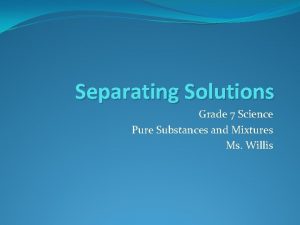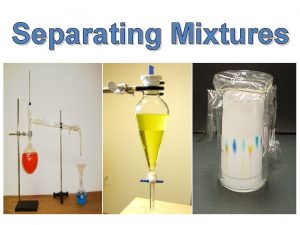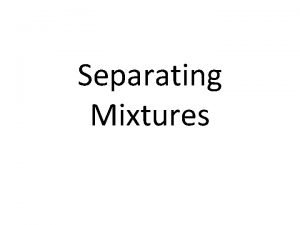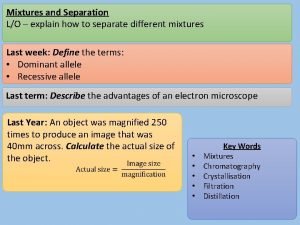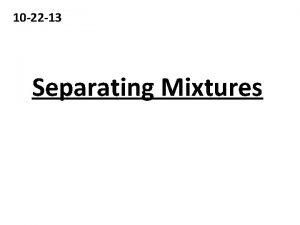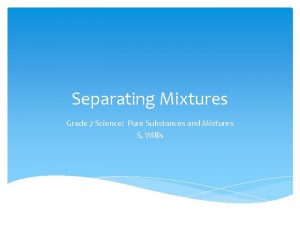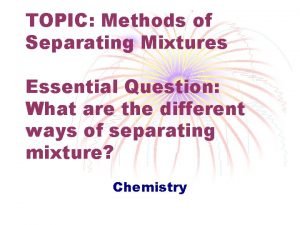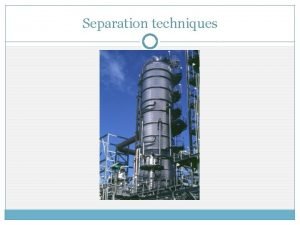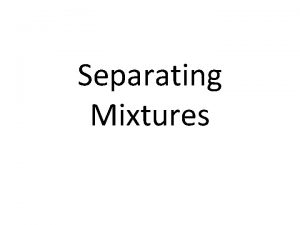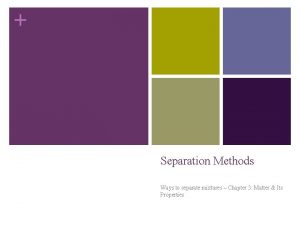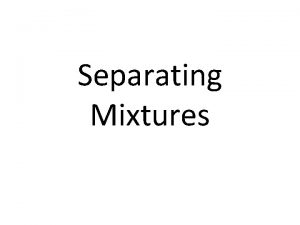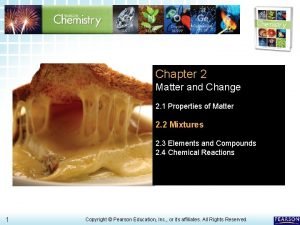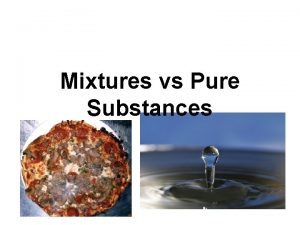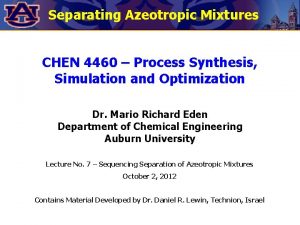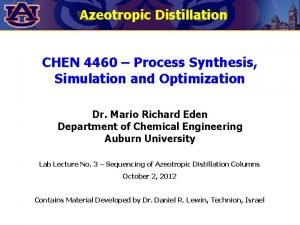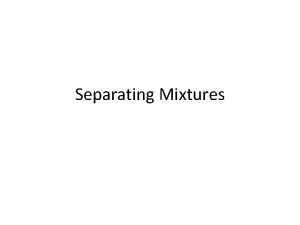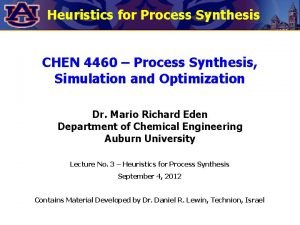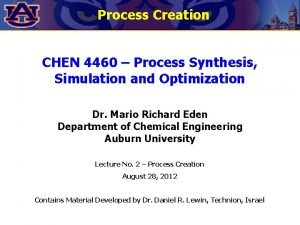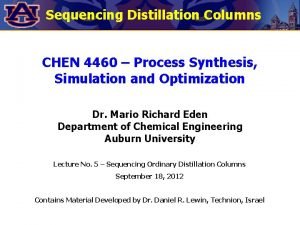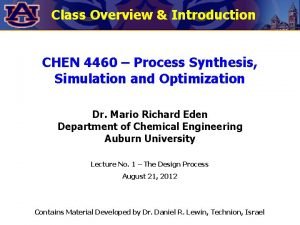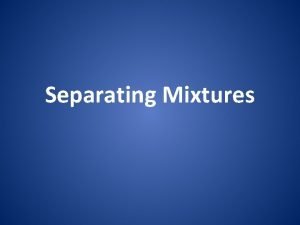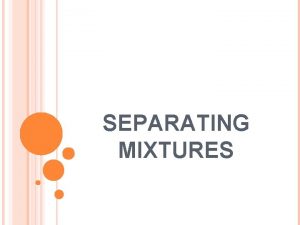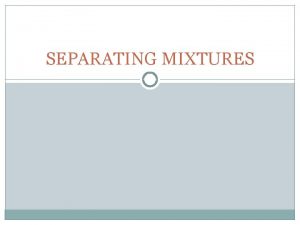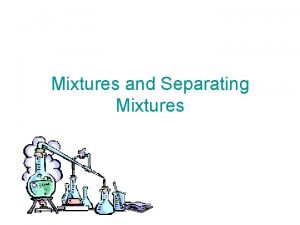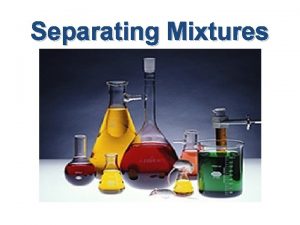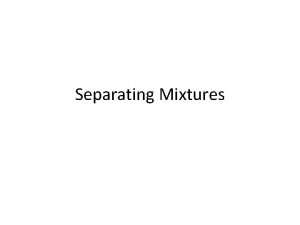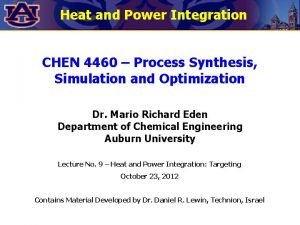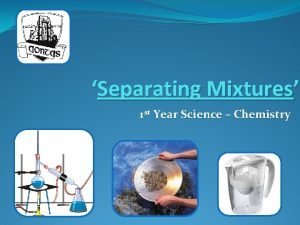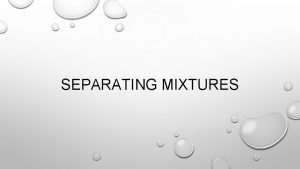Separating Azeotropic Mixtures CHEN 4460 Process Synthesis Simulation





















- Slides: 21

Separating Azeotropic Mixtures CHEN 4460 – Process Synthesis, Simulation and Optimization Dr. Mario Richard Eden Department of Chemical Engineering Auburn University Lecture No. 6 – Review of Non-ideal Thermodynamics September 25, 2012 Contains Material Developed by Dr. Daniel R. Lewin, Technion, Israel

Process Design/Retrofit Steps Assess Primitive Problem Detailed Process Synthesis Algorithmic Methods Development of Base-case PART II Detailed Design, Equipment sizing, Cap. Cost Estimation, Profitability Analysis, Optimization Plant-wide Controllability Assessment

Algorithmic Methods

Lecture 6 – Introduction • Separation sequences are complicated by the presence of azeotropes, often involving mixtures of oxygenated organic compounds: Alcohols Ketones Ethers Acids Water • In these cases, distillation boundaries limit the product compositions of a column to lie within a bounded region. • This prevents the removal of certain species in high concentrations.

Lecture 6 – Objectives Be able to sketch the residue curves on a ternary phase diagram Be able to define the range of possible product compositions using distillation, given the feed composition and the ternary phase diagram

Basics: The Lever Rule

Basics: Ternary Phase Diagrams 0. 2 TBA 0. 65 DTBP 0. 2 DTBP 0. 15 H 2 O

Basics: Ternary Phase Diagrams 0. 2 TBA 0. 2 DTBP 0. 6 H 2 O

Homogeneous Azeotropes 1: 4 At equilibrium: At fixed temperature

Homogeneous Azeotropes 2: 4 Example – Phase diagrams for benzenetoluene mixture at 90 o. C

Homogeneous Azeotropes 3: 4 For non-ideal mixtures, the activity coefficients are different from unity: If the mixture has a minimum-boiling azeotrope minimum Example – Phase diagrams for Isopropyl ether-Isopropyl alcohol

Homogeneous Azeotropes 4: 4 For non-ideal mixtures, the activity coefficients are different from unity: If the mixture has a maximum-boiling azeotrope maximum Example – Phase diagrams for Acetone-Chloroform

Heterogeneous Azeotropes For a minimum-boiling azeotrope with large deviation from Raoult’s law ( ), phase splitting may occur and a minimum-boiling heterogeneous azeotrope forms, having a vapor phase in equilibrium with two liquid phases. Homogeneous Azeotrope Heterogeneous Azeotrope

Residue Curves 1: 3 Simple Distillation Mass balance on species j: Rearranging:

Residue Curves 2: 3 • Residue Curves Liquid Compositions at Total Reflux Residue curves for zeotropic system Residue curves for Azeotropic system

Residue Curves 3: 3 • Residue Curves Liquid Compositions at Total Reflux Species balance on top n-1 trays: Approximation for liquid phase: Substituting: Rectifying section of distillation column At total reflux, D = 0 and Vn = Ln-1

Sketching Residue Curves Plot pure components on vertices along with Tb Plot all azeotropes on diagram along with their Tb Plot residue curves connecting all azeotropes, azeotropes & vertices, and finally vertices & vertices with arrow heads pointing towards increasing boiling point temperatures Plot additional residue curves that “arch” towards intermediate temperatures on the way to the end point

Product Compositions Regions • For zeotropic systems – L: Lowest boiling component, I: Intermediate boiling component, H: Highest boiling component, F: Feed composition Pure L distillate Pure H bottoms

Product Compositions Regions • For azeotropic systems – Shaded regions: Feasible distillate and bottoms product compositions Two binary azeotropes Three binary azeotropes and one ternary azeotrope

Summary – Non-ideal Thermo On completion of this part, you should: Be able to sketch the residue curves on a ternary phase diagram Be able to define the range of possible product compositions using distillation, given the feed composition and the ternary phase diagram

Other Business • Homework – – • SSLW: 8. 14 b-d, 8. 15 Due Tuesday October 2 Next Lecture (October 2) – – • Part 1: Sequencing Azeotropic Distillation Columns (SSLW 230 -251) Part 2: Review for Midterm Exam – – October 9 during lecture Open book or closed book?
 Dissolve
Dissolve Separating mixtures simulation
Separating mixtures simulation Sublimation
Sublimation Sublimation process of separating mixtures
Sublimation process of separating mixtures Separating mixtures grade 7
Separating mixtures grade 7 What is the importance of separating mixtures
What is the importance of separating mixtures Separation of mixtures
Separation of mixtures Example of sifting
Example of sifting Grade 7 natural science term 3 worksheets
Grade 7 natural science term 3 worksheets Chromatography separating mixtures
Chromatography separating mixtures Separating mixtures 5th grade
Separating mixtures 5th grade Separation techniques gcse
Separation techniques gcse Separating mixtures worksheet grade 5
Separating mixtures worksheet grade 5 Separating mechanical mixtures
Separating mechanical mixtures Centrifuge separating mixtures
Centrifuge separating mixtures Objectives in separating mixtures
Objectives in separating mixtures Example of magnetism in separating mixtures
Example of magnetism in separating mixtures 14. separating mixtures of liquids.
14. separating mixtures of liquids. How can mixtures be separated
How can mixtures be separated Evaporation separating mixtures examples
Evaporation separating mixtures examples Separating mixtures
Separating mixtures Pure substance picture
Pure substance picture
